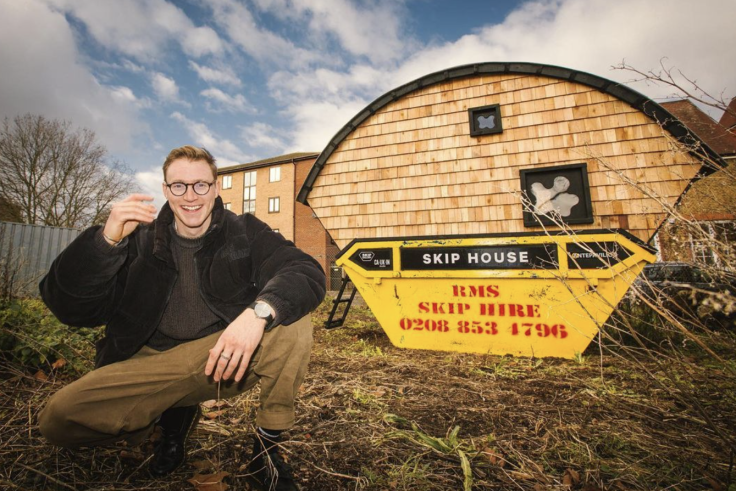London Man Pays $62 Monthly To Live In A Refurbished Dumpster To Avoid High Rent
A rising trend of poor accommodation at higher costs

London-based Harrison Marshall, who runs a small architecture firm called CUIKIN Studio, has become very popular on social media after he started living in a refurbished rental dumpster that technically cost him $62 a month. Why?
Marshall couldn't find an apartment within his budget after returning to London from work in Central America and Southeast Asia. In an interview, he said that a one-bedroom apartment in Southwark, London, costs nearly $1,850 monthly, which was over 75% of his income.
High living costs, rising rents, and elevated housing prices are stretching the budgets of renters and homeowners worldwide, creating a drag on the housing market. According to Apartment List, the median US rent steadily climbed to $1,388 in April 2024 from under $1,100 in 2017.
Why a Dumpster and How?
Marshall's firm worked with the SKIP Gallery, which revolves around artwork in the confines of a dumpster. On hearing about this project, a London-based art studio, Antepavilion, offered him an empty patch of land in Southwark to place a house.
In December 2022, he spent three weeks and $5,000 to create a 25-square-foot home, with plans to live there for at least a year. This tiny house was Marshall's attempt to relay the message to landlords that he had literally turned his living conditions into art, highlighting the "absurdity" of London's housing crisis.
To make the space livable, he planned storage, a kitchen, a mini-fridge and heater, internet connectivity, lots of houseplants, and a "mezzanine-style" bed. Marshall also installed an insulated timber frame for walls and a roof, along with a ladder connected to one of the three windows that welcome natural light.
Although he uses the laundromat, showers at the gym, and ensures home water supply through a hose pipe, the biggest challenge was the constant attention of the people who stopped to look at the house. It is a popular location where people around Marshall pay thousands of dollars in rent every month. He also loved that the Skip House is only a 15-minute bike ride from his office.
What Are His Costs of Living?
View this post on Instagram
Marshall barely had any house maintenance costs. Coming to utilities, his water supply came from a neighboring apartment, while the electricity bill was negligible and included in his land sponsorship. He spent the first few weeks living in the new house without electricity, though, until he could connect to the power grid.
Wi-Fi connection via a dongle cost him a fixed $20 monthly. Surprisingly, the waste management company that rented him the dumpster didn't even charge him the monthly fee, which likely kept his monthly housing and utility costs well within double digits.
Marshall had said, "I wanted to hammer home the realities of the rental situation in London by creating something that could be considered better than many of the rooms on offer around London, even though it was in a dumpster." He wouldn't swap that place for "no savings and a small, damp room." He probably also enjoyed the fact that there is no landlord.
Does Marshall Signify A Broader Shift in Housing Markets?
While Marshall's take on art may be unique, the challenges he faces in renting a house are common among renters. Marshall's action signifies what people are willing to do to save money and prevent their household finances from collapsing.
It also shows how people seek an easy commute to the office, hassle-free living without a landlord, the lowest possible costs, and the freedom to "literally" move houses.
Millennials, the largest renters in the US, are looking for cheaper spaces as the ongoing employee layoffs in private sectors continue to impact this generation the most. In addition, high inflation and slow wage growth continue to hinder the ability of the common person to find a decent place to live.
© Copyright IBTimes 2025. All rights reserved.






















